|
Over the years much information has been
published in books, magazines, newsletters and on the internet
concerning many topics of interest to Mopar restorers. One
area that has not been very well documented, however, is
brake system components. The purpose of this article is
to clear up some misinformation, help owners to have their
cars correct, and in some cases even save owners some time
and money.
The power brake booster is p/n 3461118. Original
boosters can be rebuilt. They are painted semi-gloss black
and usually are seen with a daub of hemi orange paint above
the installed master cylinder. One often seen item that
is functional but is not concours correct is the booster
check valve. Later replacement check valves have a raised
right angle nipple, where on the original check valves did
not have this nipple.
Original style
power booster check valve installed on a booster. Probably
was installed on booster when painted, in which case it
would be painted black.

Later style replacement
power booster check valve is installed on this car's booster.
Master cylinders owners have installed on
their cars are often not correct. There are two basic master
cylinder designs depending if the car has drum brakes or
front disc. Drum brake master cylinders have equal size
front and rear fluid reservoir chambers. Disc brake master
cylinders have one fluid chamber that is much larger than
the other. The reason for this is because the displacement
of the disc brake caliper piston requires a much larger
volume of brake fluid than the displacement of wheel cylinder
pistons. T/A’s and AAR’s came standard with front
disc brakes. However it is very common these days to spot
drum brake master cylinders installed on these cars. This
is a potentially dangerous mistake because it is possible
to have too little brake fluid available for the calipers
when using a drum brake master cylinder.
The original master cylinder installed on
disc brake 1970 E- bodies (except hemi) was the p/n 2944453.
It can be identified by a casting number 2229171 on the
bottom. These assemblies are date coded with information
stamped in the outlet side of the casting ( 0 100 would
be the 100th day of 1970). Although there is not a kit available
through the aftermarket specifically for this OE part, a
Raybestos MK551 kit has the correct diameter internal seals
and these seals can be used to replace worn out ones on
the original pistons.
Master cylinders can also be professionally
rebuilt at places like Brake and Equipment Warehouse in
Minneapolis and White Post Restorations in Virginia. There
are several aftermarket master cylinders that install and
function correctly if an original part cannot be found.
Raybestos and Napa part numbers 36283 and 36307 work fine
but do not look exactly like the original. If your car has
a drum brake master cylinder it should be replaced with
a disc brake one! Disc brake master cylinders from that
era were painted gloss black, even the filler cap. The gold
anodized filler caps we see on so many restored Mopars look
nice but are no more correct than chrome valve covers or
headers.
Chrysler part
number 2944453 is the master cylinder used on all 1970 E
bodies with disc brakes except for 426 hemi. The distinctive
shape on the front of the casting is sometimes referred
to as the "thermometer" front.
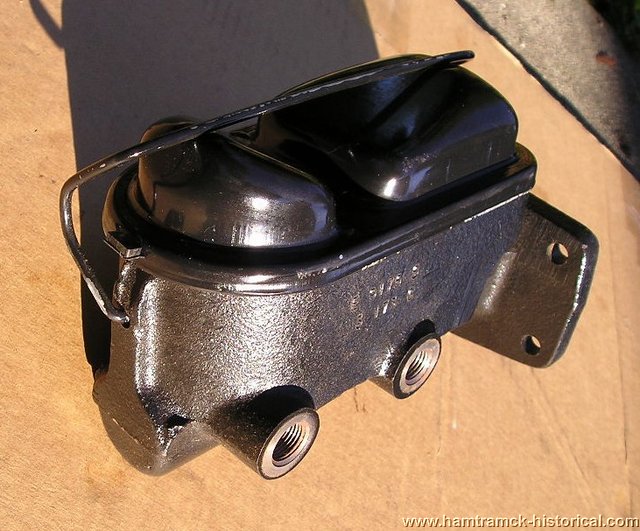
The Chrysler part
number 2944453 can be identified by the casting number 2229171.
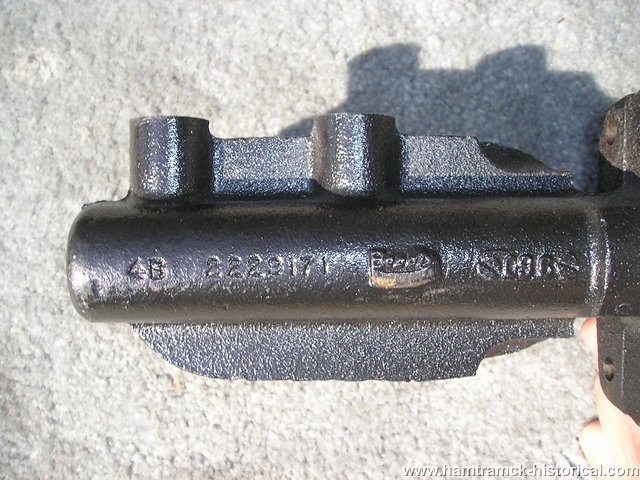
The datecode
is stamped in the outlet side of the master cylinder casting
in the second line. This example was made on the 173rd day
of 1973.
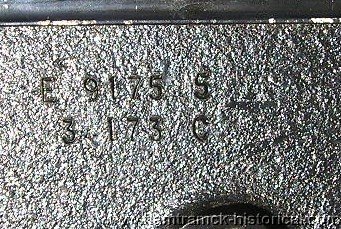
Rotors are also available from the aftermarket.
These can be purchased through local aftermarket auto parts
stores like NAPA at a lower price without the shipping charges
that the restoration parts businesses charge. (Raybestos
p/n 7008, NAPA p/n 85530) Aftermarket rotors differ slightly
from OE in that they are one piece instead of the original
two piece design. On original rotors the flange where the
wheel studs are installed was held in place by the installion
of the mounting studs. Aftermarket rotors are machined out
of a single casting but function correctly. The studs are
included on the rotors but on the aftermarket versions they
are all standard thread. The studs can be replaced with
reverse thread ones on the driver’s side to be correct
if desired.
Calipers are still readily available through
the aftermarket. These are a single piston design for E
bodies. Currently available calipers are rebuilt assemblies,
not new, and therefore they are original OEM castings with
new internals.
Original (left)
and aftermarket (right) rotors show the difference in mounting
flange on original rotors. 
Front brake hoses are also available from
the local auto parts store. They are nearly identical to
original with the exception of some information stenciled
on the hose. Original front hoses also have a date code
stamped in to one of their brass fittings. Though not available
at local parts stores, excellent reproduction brake lines
and parking brake cables are available through the restoration
parts industry.
Date codes stamped in
end fittings on NOS front brake hoses.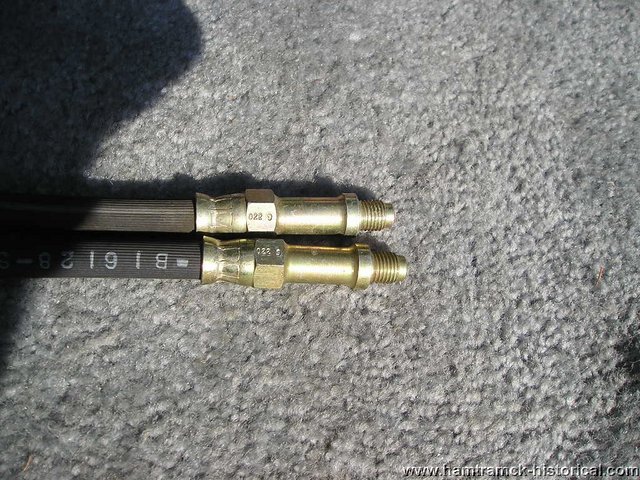
There were two styles of parking brake cables
used in 1970. One style had a flat steel outer cover. The
other style had a spring coil winding. I believe the flat
steel was used on all Trans am cars.
For the rear drum brakes, the original wheel
cylinders have a casting number 3461776. Kits to rebuild
original wheel cylinders or complete new aftermarket wheel
cylinders are readily available through auto parts stores.
Hardware kits are available through the aftermarket. New
drums available at auto parts stores work well. When placed
next to original drums minor differences can be seen in
the castings. For cars with rallye wheels the outer surface
of the drum behind the installed wheel was painted red.
On cars that had the 15x7 steel wheels this area was not
painted.
It should go without saying that the brake
pads and shoes are still readily available. The only items
that are not easy to find are the proportioning valve that
is installed in the area below the master cylinder and I
am not aware of anyone selling the rear brake hose.
Portion of NOS
parking brake cable showing flat steel covering.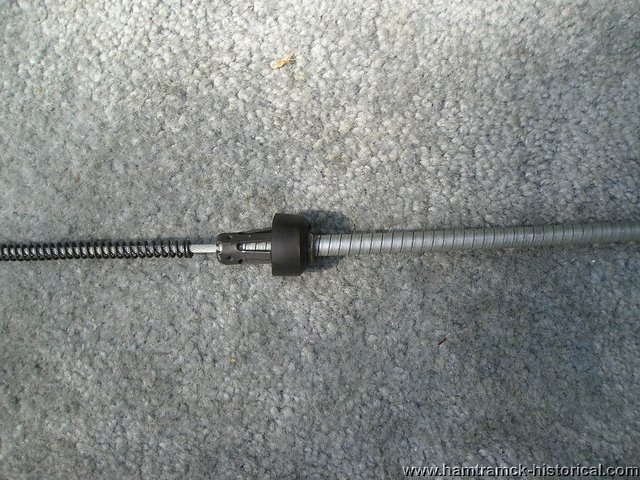
I hope this information helps to keep your car stopping
as quickly as it accelerates!
White Post Restorations
One Old Car Dr.
P.O. Drawer D
White Post, Virginia 22663 540-837-1140
www.whitepost.com
Brake & Equipment Warehouse,
Inc.
455 Harrison St. N.E.
Minneapolis, MN 55413 612-378-3141
|